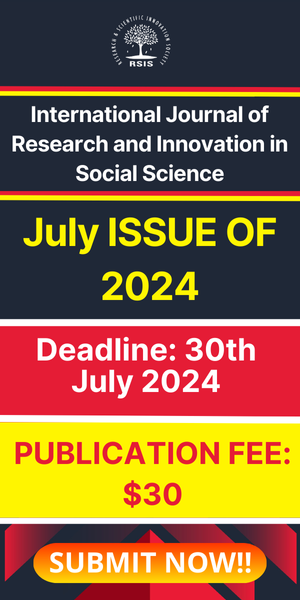- January 14, 2021
- Posted by: RSIS Team
- Categories: English, IJRISS
International Journal of Research and Innovation in Social Science (IJRISS) | Volume V, Issue I, January 2021 | ISSN 2454–6186
Book Review on ‘The Village in the Jungle’ By Leonard Woolf
Abeyweera, G.H., Tennakoon, TMPSI, Rubavathanan, M
Department of English Language Teaching,
Uva Wellassa University of Sri Lanka
Introduction
The novel written by Leonard Woolf which was published in 1913 is basically about novelist’s experience about Colonial Sri Lanka written in the intuitive point of view. Thus, it portrays a vivid picture of the lives of a deprived and pitiable family lived in the small village called Baddegama which in terms of literally ‘the village in the jungle.
The events that take place in the novel provide a set of mixed feelings of terrifying, depressing and interesting. The description given to the jungle is quite awe inspiring and fearsome. According to the novel, “All jungles are evil, but no jungle is more evil than that which lay about the village of Beddegama” . Baddegama is a rudimentary, primitive settlement in the deep south of then Ceylon now Sri Lanka with just ten families. These families which are poverty-ridden are very much closer to the animals in the jungle. There are civilized culturally influenced values instead people are caught in a muddled traditional beliefs, superstitions and stoicism. The spirit of the jungle is in this village and the people who live in the thicket. The jungle with its hints of evil develops the background of the novel. With this setting, novel begins its exposition by introducing the protagonist or the principle character together by introducing several incidents with other characters which is the development of the novel.
Body of the Novel
The novel mostly accounts the life of Silindu and his twin daughters who are independent individual with their own living style in order to dwell peacefully with themselves and the jungle. The villagers resolve they are outcast or pariahs and even demons and therefore decided not to extend their help or a finger as they are plotted against over and over for the gains of others. The lives of their twin daughters, PunchiMenika and Hinnihami are overwhelming and upsetting in the way their lives are wasted at the expense of others.
The incidents that are being narrated by Leonard Woolf will give the reader a realistic picture of the village in the Baddegama which is dominated by three corrupt influences, the Headman, Babehami who is the local agent of the British Administration, Punchirala the village medical practioner and kattadiya and Fernando, the trader. The despicable predicament of the villagers in Baddegama discloses through Silindu, the protagonist in the novel and his interaction with these three evil men. Silindu a man of the jungle is a hunter, and Chena cultivator meets the British Officials in the guise of the village Headman who insists that he obtains a licence for a gun which under normal circumstances is not an easy task to obtain a licence. Meanwhile, the Headman bears a grudge against Silindu from the time of the death of Silindu’s wife, a sister of the Headman Babehami due to ill-treatment she suffered in the hand of Silindu for giving birth to twin daughters instead of sons to help him for hunting and for his Chena cultivation. The Headman harasses Silindu at every opportunity he gets and thus Silindu makes it imperative that he gets the licence for a gun. The episode concludes with Silindu going to Kamburupitiya to get his gun lience and borrow grain from the trader (Mudalali) there. Meanwhile, the Headman uses the non-payment of body tax to harass further. Usually, what generally happens is that the Headman pays the tax for all the villagers and later recovers it with a very heavy interest but not for Silindu whom he wants to irritate.


